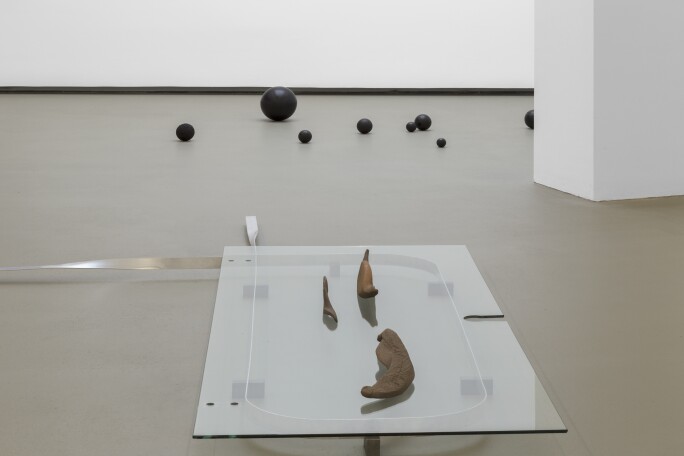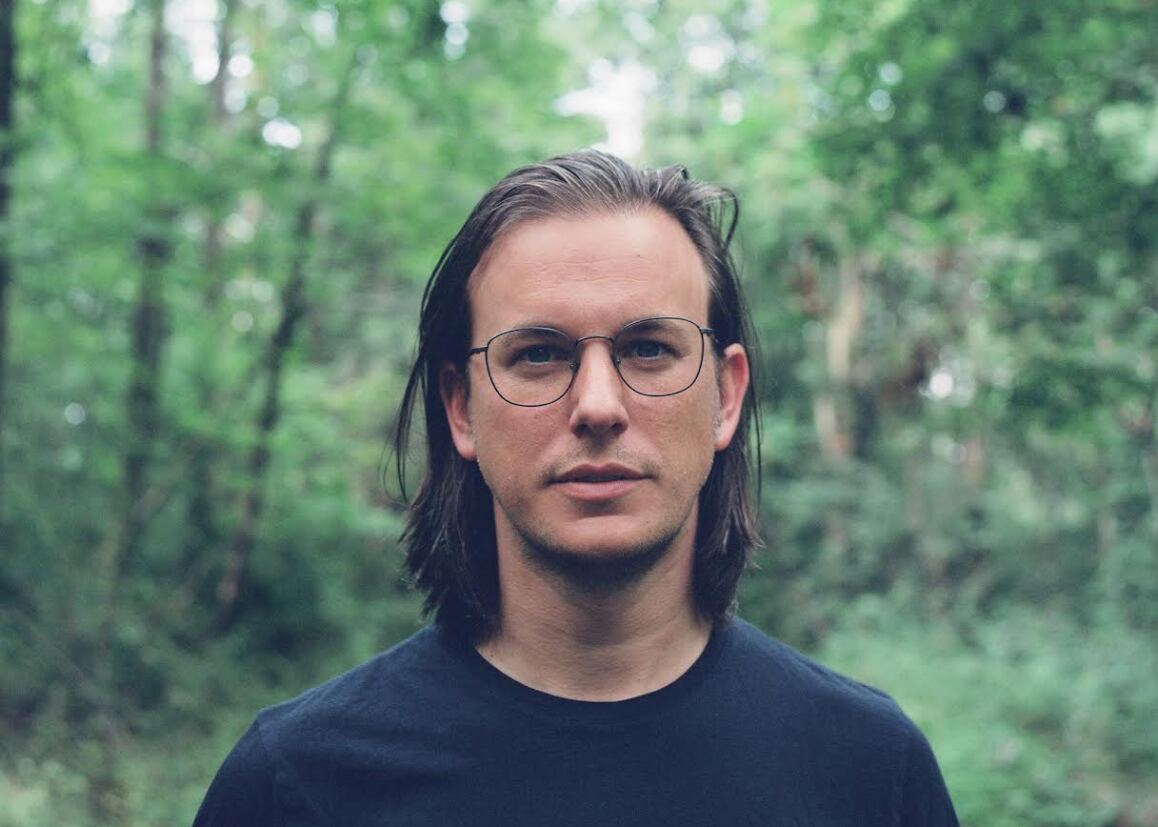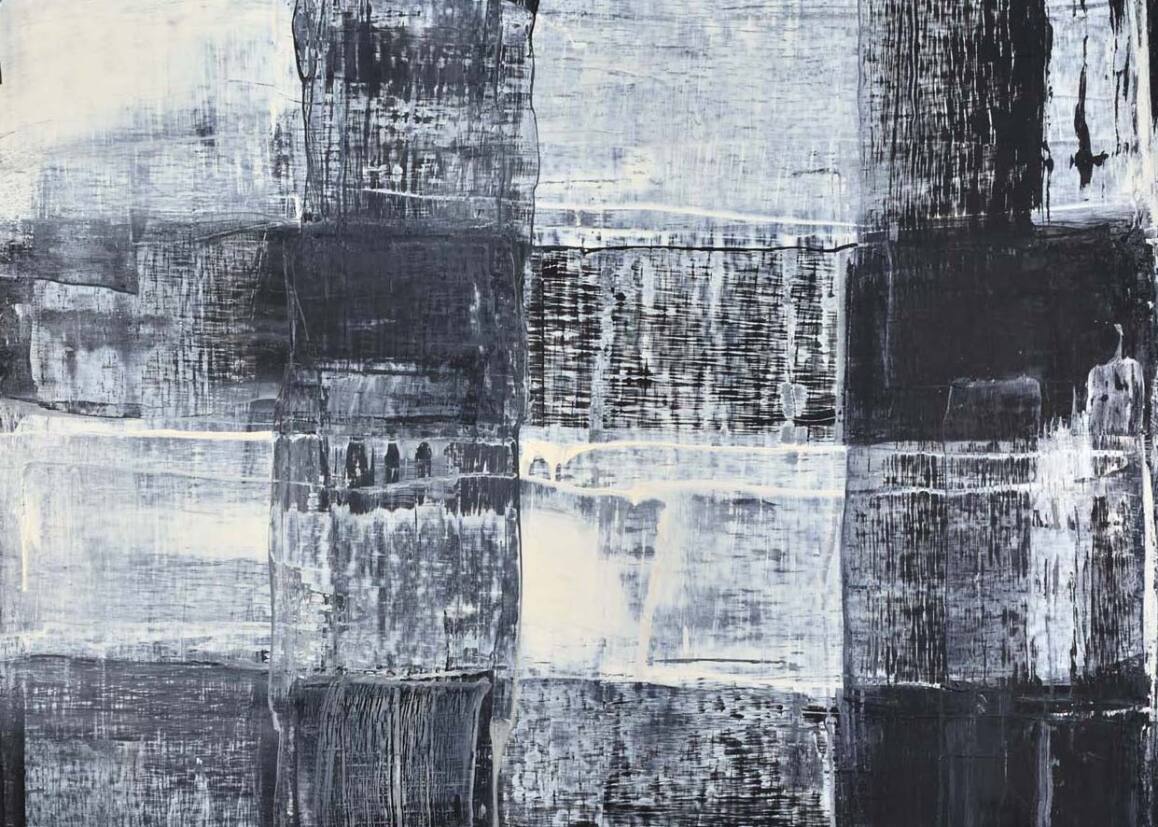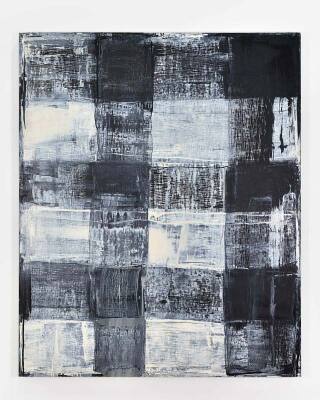U nder Hedi Slimane’s creative direction, Celine has redoubled its ties to contemporary art, especially with the launch of the Celine Art Project in 2019. The project funds acquisitions and commissions that see newly made artworks installed in Celine’s stores and showrooms, providing a site-specific showcase for contemporary artists whose interests, from punk rock to Minimalism to Bauhaus design, complement Slimane’s own. It’s a new kind of corporate benefaction predicated on a shared commitment to creativity, expression and aesthetic pursuit.
This summer, we spoke with six artists whose work has been acquired by Celine – presenting partner of The London/Paris Sales – in the last year.
Jacob Kassay
When Jacob Kassay was starting out, Dior contacted him to help design one of its stores. Years later, he was invited to attend a YSL fashion show. He didn’t know how he got on the list – or even how anyone at the fashion house knew where to send the invitation – but he ultimately chalked it up to one of life’s mysteries and went.
Only in 2020, when Hedi Slimane purchased a sculpture of his, did Kassay start to think that “Hedi has been weirdly supportive over my entire public-facing career,” he says. Each reach-out occurred when Slimane was working for the respective fashion house.
That public-facing career started with his silver paintings, which date to the late aughts.
Kassay studied photography as his art school program was “changing over from an analog to digital form,” he remembers. Within this paradigm, Kassay began experimenting with printmaking – as well as with different ways for art to challenge the consumption and reproducibility of digital imagery.

His silver paintings, made by applying a catalyst directly to primed canvas, then electroplating, were “contingent on their environment, hypersensitive to their lighting and surroundings, and resistant to documentation,” he says.
People had to see them in person.
Kassay often compares this conceit to Ad Reinhardt’s when he made his black paintings, as it is nearly impossible in photographs to tell them apart. They are “objects which disagree with their documentation [and insist] on primary experience,” he once wrote.
On top of that, the work typifies a desire to knock the viewer out of a media trace. By inserting unsettling elements into otherwise pretty basic and repetitive imagery, Kassay can toy with notions of viewer attachment – and vice versa.
“The speed of media is only getting faster and faster. So when you’re talking about the fundamentals of painting, don’t you want to be more involved with the slower sides of it?”
Art has become “something that all of a sudden is incorporated into this media machine,” he says, “And the speed of media is only getting faster and faster. So when you’re talking about the fundamentals of painting, don’t you want to be more involved with the slower sides of it? Isn’t that the luxury of it?” Versus swiping, toggling or clicking past it.
This interest also applies to his recent pieces, which incorporate images of a type of particle board called OSB. “I took a photograph of that wood and then printed it right back on itself,” in such a way that the resulting images look like they are moving.
That series, too, is “something that can’t be photographed,” he notes.
Kassay began moving away from exhibiting his painting shortly after completing the silver paintings – but not entirely. He repurposed the wood supports as art objects – one of which Celine later acquired – and the form of each of these sculptures was “dictated by the bits lost at the edge or extremities of the outline,” he explains.
Kassay’s sculptural work, which has dominated his professional career, allows him to lean into his preoccupation with how forms “should be read in space,” he says. “I always thought that work should be dependent on its [physical] situation,” he continues, in that it should visually incorporate the elements that are peripheral to it (but just as important as the object itself).
In that way, he’s keen on creating a visual balance between his pieces and “whatever is surrounding them,” he explains.
This emphasis seems particularly acute when evaluating the second piece in Celine’s collection, which dates to early in Kassay’s career and looks like a square canvas that has been distorted by pulling at one side, resulting in a convex end opposite a concave one.
“It’s really just supposed to suggest that there’s something missing – and you want to complete that circle,” he says.
Kassay uses the French term jamais vu, which means finding something unfamiliar about the familiar, to point to a “curiosity,” he says, that has influenced his entire practice: “things that force you back into your own body, your own self … that are unburdened by other people’s determinations of what the work means.”
Elaine Cameron-Weir
“I personally have a sense that … not that we’re entering the Dark Ages, but it feels a lot like we’re on the edge of something.”
So Elaine Cameron-Weir describes how the state of the world motivates her as an artist.
“It just feels like we’re on the edge of a massive disaster. But in spite of that, I’m really an optimist.” Cameron-Weir believes that it’s her job to address some of these societal issues in her work. “I don’t think my aim is self-expression,” she once said, “it’s more communication of ideas that can’t be conveyed in other ways – other than visual art.”
In that way, Cameron-Weir gravitates to using everyday materials or found objects, things that you can “look at and know what they are,” she explains, “or look like they existed already,” to make her sculptures and installations more accessible to an audience.
Recently, Cameron-Weir has incorporated a lot of snake-like imagery into her pieces. Snake X, Celine’s first acquisition of Cameron-Weir’s work, is a “jumbo version,” she notes, of a series of 14-foot-long pieces she first exhibited in 2016 as part of her solo show – titled “snake with sexual interest in own tail” – at the gallery Venus Over Manhattan.
Cameron-Weir made the works by individually attaching enameled copper scales to industrial architectural mesh as backing. She makes sure to employ “lo-fi approaches to give the works a very manufactured, [and one-of-a-kind] feel,” she says.
“I don’t think my aim is self-expression. … It’s more communication of ideas that can’t be conveyed in other ways – other than visual art.”
Using a serpent motif called the ouroboros as her point of departure, Cameron-Weir references conceptual elements relating to it as an ancient, mythological symbol of the ongoing cycle of destruction and regeneration. Cameron-Weir then conveys the conceptual significance of those elements through their placement within the piece itself. In the 2016 show, Cameron-Weir used a pulley system to display the panels, draping the hanging cable over the ceiling beams and then securing the apparatus to the ground with a sandbag.
This format has allowed Cameron-Weir to experiment in her work with the idea of the balance of power.
For example, in a recent piece Cameron-Weir made for the Venice Biennale, titled Low Relief Icon (Figure 1) and Low Relief Icon (Figure 2), she incorporated a more pronounced version of this pulley system, pairing candle-adorned military transfer cases – which are used to move dead bodies – with a factory conveyor belt embellished with pewter roundels that depict repeating images of the crucifixion. The weight of the items she places on opposite ends may not be equal, but “the ideas have the same pull,” Cameron-Weir once said, when comparing how they often relate to one another.
Cameron-Weir has not only incorporated religious iconography in her work, but she also brings in various religious paraphernalia to illustrate how some are meaningful as functional objects too.
“There is also something in the function of a pulley that implies a use to an object that goes a little bit beyond contemporary art in a gallery,” Cameron-Weir says. “The objects are not just ornamental.”
As with all of her pieces, “there is a meaning that I want to be formed,” she says. “But I want it to be formed through interaction with it, and the fact that it’s real. And it’s in the world.”
Katinka Bock
When Celine asked Katinka Bock for a video explaining who she is as an artist, she thought: “I don’t want to didactically explain my practice.” Instead, she gave Celine a film she had made.
The film, titled _o_o__o, “is like a resume of my obsessions,” she continues. “So I thought it was a good answer to the question about who I am.”
Celine edited the 5-minute film into a “teaser version,” as Bock calls it, with the original sequence of black-and-white stills featuring “playful moments with objects and persons, like pancakes and green and red peppers,” remaining intact. Celine then requested that Bock add spoken words. Taking another unique approach in her response, Bock narrated the film by reading a poem she had written.
The experiment was so successful that she decided to pursue the combination as a new creative outlet. Up to this point, Bock had individually explored film and poetry but never before merged the two. “This was the beginning of something,” she says. “From this teaser, I’m now showing a long, 10-minute film that’s based on it.”
Bock describes her work as elastic. “It’s a bit like a column, in that you can build it up – but you can also unbuild it,” she says, “and it’s a little bit different when you switch the shapes in different directions.”
Celine’s first acquisition of Bock’s work was an actual column. She stacked chocolate-brown clay boxes into a tall, roughly human-sized structure. “It’s a reference to a human-person standing, in a negotiation of a pedestal,” she explains about Velvet Column. “But it’s not holding something on top of it; it’s not to put someone on top of it; it is the simple gesture of standing itself.”
“It’s a reference to a human-person standing… But it’s not holding something on top of it; it’s not to put someone on top of it; it is the simple gesture of standing itself.”
She constructed the work with “elements that are all individually different, but done in the same way,” she explains. “So it’s a bit like in a bakery, with gestures that you're doing repeatedly – which I’m often doing in my practice.” As Bock sees it, “that difference is what gives it value; makes it singular and unique.”
Artforum once described her process for creating another sculpture, titled Aal und Aal (Eel and Eel) – which looks like a group of clay creatures stuck mid-slither atop a glass door – as: “gripping raw clay and repeatedly swinging it downward like a meat cleaver.”

When Bock uses art to answer a question she’s been mulling over, “I first think in sculpture,” she says, “and if there is something that it can't resolve, I take the camera to film.”
So while Bock’s practice has leaned towards sculpture in the past, she still doesn’t “take a monolithic approach,” she says. She also regularly experiments with photography, film and poetry, and cross-pollinates throughout, in search of those moments when everything makes sense to her artistically.
She considers her practice as she does her pieces themselves: like they can always evolve.
“So many things that I like are holes, windows, openings,” Bock says. The artist gravitates to those things because they interfere with all the borders or barriers we tend to erect in our lives. And since those borders “are never set naturally,” Bock continues, she always wants to move past them.
“One of the lines of my poem is: ‘Here, the world opens up.’ And often I really feel like that: ‘Here, the world opens up.’”
Maia Ruth Lee
When the Covid-19 pandemic shut down New York City, Maia Ruth Lee and her family found themselves stranded in Los Angeles. “So we basically wrapped up our New York lives remotely,” she recalls, “and were unexpectedly relocating – with no idea where we were going.”
Lee and her husband decided to move to his mother’s house in Colorado. They later settled in a small town nearby, determined to ride out the pandemic surrounded by nature. “And then once we got here, we were like, ‘Actually, let’s stay here.’” So they never left.
“And after we got here, my work naturally evolved,” Lee says.

At this point, Lee’s longest-term project had been a sculpture series called “Bondage Baggage.” She came up with the idea for it more than a decade ago, during a trip to see her family in Nepal. She noticed travelers carrying their belongings in a specific type of luggage.
“The luggage is very universal to a lot of developing countries,” she says, “and they were often owned by migrant workers who are traveling back to Nepal with precious goods.”
The bags look like overstuffed packages as opposed to modern-day luggage. They are often made with everyday materials, like bedsheets or tarp, and tightly wrapped with tape or rope. After spending years photographing and compiling hundreds of images of different types of them, Lee landed on a prototype to use for her sculptures.
For Lee, the luggage served as an entry point to address issues relating to migration, family and the act of itinerant living.
“There is a lot of activity around the work, and sweat that goes into rolling this piece onto the studio floor until it becomes this pristine painting.”
But when Lee moved to Colorado, she started “thinking about how to translate those from sculpture to something else,” she says. “And what ended up happening is: I started to paint.”
Lee initiated these works as she would her sculptures, but she covered the pieces in canvas to paint the surface. “Then I would unleash this sculpture,” she explains, “and cut open the ropes and unravel the canvas.” As a result, “there is a lot of activity around the work, and sweat that goes into rolling this piece onto the studio floor until it becomes this pristine painting,” Lee continues.
Celine acquired one of those paintings, Bondage Baggage Atlas 12, which looks like a graphic imprint of her sculpture work. “It ended up being almost like printmaking, but the painting of a 3D object to change it into a 2D object,” she explains.
In an effort to “include all aspects of the process,” Lee says, she also repurposed the cut rope to create wall installations, positioning the black-dyed pieces against a white background. These rope works, in particular, reminded Lee of “a kind of topographical type of map,” she says, which is why she titled them “Atlases.”

The tangle of rope in Atlas IV, another work Celine acquired, often casts a gridded shadow when displayed, invoking the idea of movement and impermanence.
Similar to the original series, Lee wanted the works in this iteration of “Bondage Baggage” to harken back to those moments when she watched people travel in and out of the airport in Kathmandu. “I was thinking about how to poetically exert those experiences,” she says, “rather than having this didactic idea of what migration might be.”
Rochelle Feinstein
Years ago, Rochelle Feinstein read a review of her work that characterized her paintings as “beautiful.” That’s the last thing she wanted them to be.
“I thought, I’m not interested in beauty,” she says. “If that’s the takeaway of my work, I have to really figure out how to get to what is at the forefront of my thinking.”
This realization triggered an overhaul of her entire painting practice – and so Feinstein began experimenting with geometry in her work, painting grids using uncommon tools like plaster trowels or wiper blades.
“When I came up in the world of New York painting, there were two camps: one was painterly abstraction and the other was geometric abstraction. So I chose to go with geometric abstraction,” she explains.
“I wanted to acknowledge Pollock by using horizontal and vertical actions, but there’s nothing else. There’s no gesture of my body.”
Feinstein had two reasons for choosing geometric abstraction. It was a natural fit for her painting process. More importantly, though, Feinstein considered the genre ripe for disruption. “I thought, I can really screw this up,” she remembers, “this whole male-dominated thing.”
One result is Number One-Twenty Four, made in 1991, which Celine acquired in 2021 for its Hotel Le Lievre Viewing Room. Feinstein used Jackson Pollock’s landmark work Number 1, 1949 as a jumping-off point, transforming it into the opposite of what it was meant to be.
“Pollock was painting rhythms and implicating his body,” she explains. “I wanted to acknowledge Pollock by using horizontal and vertical actions, but there’s nothing else. There’s no gesture of my body.”
Feinstein took the same pared-down, materials-driven approach in her second work in Celine’s collection, Think.
Employing a black and white palette, Feinstein made relief prints out of linen pieces. She attached square images of the weave patterns onto a canvas, creating a four-quadrant grid. Feinstein was intent on making the work as simple and non-gestural as possible.
“It’s called Think because it’s a demand on myself, but also others, just to look at a painting and think,” she says. So instead of trying to determine what the piece resembles, or what category it falls into, Feinstein wanted viewers to simply see it for what it is.
The way Feinstein has approached her career also defies quick translation. She doesn’t often commit to one style for too long. As a result, in the early nineties, “no one would give me a show, because all the work was different,” she recalls, “They’d say, ‘Well, can you do 12 of those?’ And I’d say, ‘No. That’s not the point.’”
Feinstein is adamant against her work being classified “as just one thing,” she says.
It recently took six dealers simultaneously exhibiting her work in each of their galleries to organize a survey, titled “You Again,” around her decades-long career – which includes experimentation with various styles of abstract painting, from spare and tonal to painterly and color-forward. In the past, she’s also engaged with different mechanisms, like language, to tackle social issues through her practice. Her work isn’t genre-specific either. It includes video, sculpture and installations too.
Throughout her career, people would ask Feinstein: “If you’re in a group show, how would someone know that it’s your work?”
In response, she’d declare: “The point is: it is my work.”
Eli Ping
When Eli Ping was growing up in Chicago, Illinois in the 1980s and 90s, the city was a well-known hub for architectural innovation. “Bauhaus architecture was very prominent,” he says, referencing the city’s history and preoccupation with modernists like Mies van der Rohe, a German-born architect who solidified his design language in and around Chicago after settling there in the 1940s. Thinking back, Ping actually considers the city of his youth “incredibly bleak,” he says, but also recognizes how its built landscape of spare, geometrically rendered structures and towering skyscrapers still managed to seep into his consciousness, crediting his “interest in minimalism with that bleakness of Chicago.”

Chicago’s influence is particularly evident in Post, his first of three pieces acquired by Celine. Ping made the piece using a steel I-beam – “the core symbol of modern architecture,” he says. For Post, Ping removed a segment from the beam and rotated it 90 degrees, making the upper portion look like it’s being supported by a narrow plate. In a way, Post combines a core symbol of architecture with what he says is a core concern of sculpture: “How to make heavy things appear like they’re floating.”
Ping considers the piece “a bit of an outlier in my practice,” he says. “Usually my work is more bodily and organic.” The other two of Celine’s acquisitions are from his “Monocarp” series, which he created by hanging weighted pieces of fabric from the ceiling, reinforcing the tension between the two points. He then slit the cotton of each piece and folded it onto itself in various ways before covering the sculptures in resin to have them stay in shape.
“I have to feel like a single force is moving through that artwork – without interruption.”
These freestanding pieces take on an explosive energy that stretches from the floor to a single point above.
“For my work to express what I want from it, or for me to recognize myself in it,” Ping states, “I have to feel like a single force is moving through that artwork – without interruption.”
The shift in Ping’s engagement with minimal forms, from architectural to “anthropomorphic or organic,” as he calls it, is a sign of how much more he trusts himself as an artist – and can lean into his natural instincts about artmaking in general.
Ping remembers once seeing a work by Paul Gauguin at The Art Institute of Chicago when he was younger. “I saw the places in the piece where the different fields of color encountered each other, and how he fought for the contours of his forms,” Ping says. “And I could see that there were days, weeks, hours, months – and hundreds, possibly thousands, of decisions – just in one area of the painting.”
He instantly understood the methods Gauguin had to use to engineer that work.
“As I’ve matured as an artist, I’ve moved from working from my intellect to working from that interior, intuitive and visceral place,” he says. And he wants his practice to reflect that growth. “The final form of the piece should not evince a lot of deliberation,” he says. “It should appear as if the thing happened all at once.”







































